It won’t be just the science deciding which narrative has the ear of the consumer. Media, social media, and influencers play a vital role in shaping our agenda for the next few years. If we want to continue to move towards a healthier and more sustainable food system, then finding, enriching, and disseminating reliable information and inspiration is critically important. We can’t yet be sure what the future holds, but we are confident that the world of food and hospitality will recover and the pyramid will be restored to its original shape.
If we assume the market will focus on the essentials, we can expect the following developments.
Developments
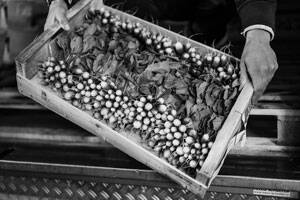
Hygiene and fresh food versus hygiene and processed food. Will companies use this fear for contamination to push for more ultraprocessed sterilized products and solutions. Are we going to be afraid of natural products, like raw milk cheese?
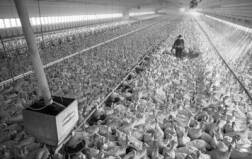
Industrial cattle breeding and virus outbreaks

Healthy food and our resistance to viruses
Which powerful narratives will emerge from this crisis and shape our future? Will the story of a return to the status quo come out on top, or will we all become more aware of the powerful relationships between:
Will this crisis lead us to rethink the definition of economic growth? If the climate and the planet benefit from a slowing down of our economy, is it then time to reconsider the necessity of economic growth? Many thinkers and analysts see this as an opportunity. Are happiness and wellbeing not essential economic metrics? Isn’t the damage that products or industries cause Mother Earth just as important? A cost that we must incorporate in our pricing of products? It’s unclear whether this historical momentum will be used to balance ecology and economy.
One of our industry leaders phrased it like this: “A permanent new sentiment has taken root in the consumer, a hyper-awareness of hygiene. For example: people will start to seriously think about how many times the salad serving spoon has been handled." All fresh and fastcasual concepts will see this trend towards ultra hygiene. Solutions range from prepackaging everything or to stopping with self service buffets. Everyone in the food and hospitality industry realizes that the lasting impact of COVID-19 is a hyper-awareness of safety and security. In the effort to ensure a safe environment for everyone - guests and employees alike - new guidelines and procedures are being put into place.
Food sovereignty
Not relying on other countries when it comes to our food supply is growing in importance. Eating locally could see a boost off the back of this.
We see growing support for ending the supply chain globalization as we know it. The worldwide lockdown has shown that countries are too dependent on China being the factory of the world. We’re seeing a call for bringing manufacturing and production back to our home countries again. Globalization becomes glocalization and that will have effect on the way meals are sourced.
Resilience will become more important than efficiency. In other words: many big foodservice companies will prioritize being able to withstand economic shocks over pursuing a strategy towards becoming cost leader. This means rethinking and reorienting the supply chain.
Bankruptcy - a big shakeout in the industry. Many small businesses won't survive the shutdown, despite governments providing financial help.
Change
We see that the corona crisis is reshaping the pyramid entirely. The bottom layer has become vastly more important. Food security, food safety, energy: it’s the basic needs that now matter the most.
Everything on top of the essentials - health, ethics, lifestyle, reconnection - is less important and less relevant with the shutdown of foodservice and the upcoming economic crisis. In the bottom layer we see a marketplace where big food is dominant, where supermarkets with lots of processed foods are becoming extremely dominant in shaping and influencing our diets.
Which trends and developments will be important after the period of COVID-19? If we assume the market will focus on the essentials (the bottom layer as described above), we can expect the following developments. We come to these through conversations with several industry leaders in foodservice over the past few weeks.






Top layer: Reconnect
A restaurant isn’t just filling a stomach, it’s feeding souls. It’s a place where the most vulnerable of human qualities is nurtured: empathy. According to the steps of the Foodlov pyramid, we are now at the highest meaning of food: reconnecting. We are repairing the broken connections between food, producers, nature’s seasons, and each other. Strong food cultures like Italy, Spain, France, Japan and Thailand already possess a powerful sense of sharing and caring through food as a community.
Fourth layer: Identity & Lifestyle
Food is a lifestyle. Before COVID-19 foodies were willing to wait half an hour for a cup of coffee made by that one barista, using that one blend. Status is no longer just the car you drive, but the food choices you make, the restaurants you frequent and the food you serve at home. The dinner table is the catwalk of good taste.
- Think about the rise of veganism and vegetarian food among the new generations.
The third layer: Origins & Ethics
What’s on your plate reflects what’s happening in the world. There is a strong relationship between plate and planet. We are getting better at understanding that the world is a closed system with finite resources. We see and feel that in the 21st century everything is connected. The choice of what we eat on this level of consciousness of the Foodlov pyramid is the key to a better world. Sustainable plant forward dining is one of the most important answers to this planetwide challenge.
The second layer: Health
On the second level of the pyramid, food evolves from mere nutrition to a means of healing and cleansing. Food will keep you in shape. The biggest trend of the last decade. Food as medicine. Food —for a specific category of foodies— serves even as internal cosmetics.
- A salad bar with different toppings such as: raisins, nuts, cheese, smoked chicken, fruit, beets, raw vegetables, hummus dip
- Whole fruit
The bottom layer: Energy & Food Security, Food Safety.
Food as fuel. At the bottom of the pyramid food serves no purpose other than providing fuel for your body to function.
- This can be fresh food, but a lot of it is ultra processed food.
Briefly, the Foodlov pyramid consists of:
Redefining the Foodlov pyramid
What effect does COVID-19 have on our food experience?
Redefining the Foodlov pyramid
In 2015 Food Inspiration presented the Foodlov pyramid. Inspired by the famous Maslow pyramid, the Foodlov model is a reflection of the values and attributes ascribed to food. It’s also an evolutionary path that a person, a group, or a society can walk on the way to forming a self-transcendent food culture. That means a culture which honours food experiences that go above or beyond the normal physical experience.
Many people are now assuming the corona crisis will act as a reset button for our society. In the conversations we have had with lots of industry- and thought leaders over the last weeks our insights have grown. We are living in an unprecedented time of chaos and complexity. And although no one can predict what the outcome of this crisis will be, we want to give our best guess regarding the impact on our world of food and hospitality. How can we visualize that big reset, that change in our food system? So that we can better understand what’s going on, what the lasting impact will be on consumer behavior and on food systems.
Hans Steenbergen Xiao Er Kong
Redefining the Foodlov pyramid
What will COVID-19 mean for our food experience, our food supply chain, our menus? The scenarios for a possible future now are drastically different compared to two months ago. Founding editor of Food Inspiration Hans Steenbergen thinks the evolution towards a healthier and more sustainable food system will temporarily be in lockdown. But if a cure for this disease would be found, the care for a better foodworld will bounce back stronger than ever before.
What effect is COVID-19 having on our food experience?
TRENDWATCH

6 min




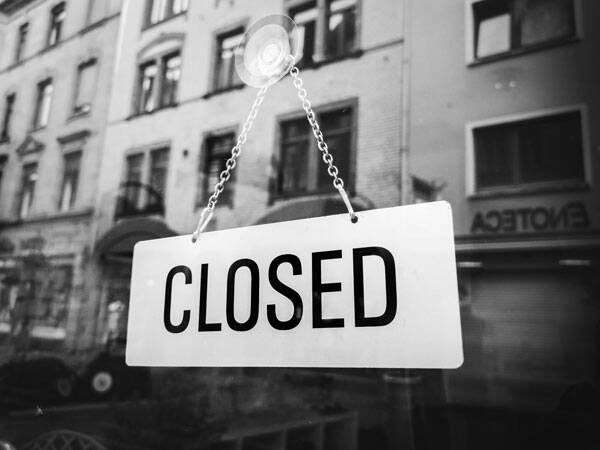
EFFECTS OF COVID-19
It won’t be just the science deciding which narrative has the ear of the consumer. Media, social media, and influencers play a vital role in shaping our agenda for the next few years. If we want to continue to move towards a healthier and more sustainable food system, then finding, enriching, and disseminating reliable information and inspiration is critically important. We can’t yet be sure what the future holds, but we are confident that the world of food and hospitality will recover and the pyramid will be restored to its original shape.
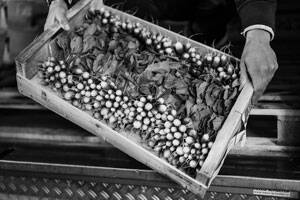
Hygiene and fresh food versus hygiene and processed food. Will companies use this fear for contamination to push for more ultraprocessed sterilized products and solutions. Are we going to be afraid of natural products, like raw milk cheese?
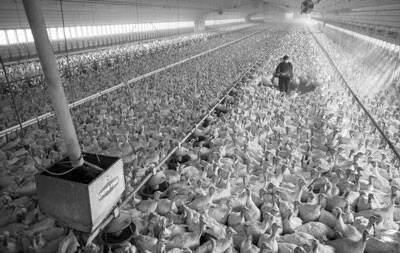
Industrial cattle breeding and virus outbreaks

Healthy food and our resistance to viruses
Which powerful narratives will emerge from this crisis and shape our future? Will the story of a return to the status quo come out on top, or will we all become more aware of the powerful relationships between:
Will this crisis lead us to rethink the definition of economic growth? If the climate and the planet benefit from a slowing down of our economy, is it then time to reconsider the necessity of economic growth? Many thinkers and analysts see this as an opportunity. Are happiness and wellbeing not essential economic metrics? Isn’t the damage that products or industries cause Mother Earth just as important? A cost that we must incorporate in our pricing of products? It’s unclear whether this historical momentum will be used to balance ecology and economy.

One of our industry leaders phrased it like this: “A permanent new sentiment has taken root in the consumer, a hyper-awareness of hygiene. For example: people will start to seriously think about how many times the salad serving spoon has been handled." All fresh and fastcasual concepts will see this trend towards ultra hygiene. Solutions range from prepackaging everything or to stopping with self service buffets. Everyone in the food and hospitality industry realizes that the lasting impact of COVID-19 is a hyper-awareness of safety and security. In the effort to ensure a safe environment for everyone - guests and employees alike - new guidelines and procedures are being put into place.
Food sovereignty
Not relying on other countries when it comes to our food supply is growing in importance. Eating locally could see a boost off the back of this.

We see growing support for ending the supply chain globalization as we know it. The worldwide lockdown has shown that countries are too dependent on China being the factory of the world. We’re seeing a call for bringing manufacturing and production back to our home countries again. Globalization becomes glocalization and that will have effect on the way meals are sourced.
Resilience will become more important than efficiency. In other words: many big foodservice companies will prioritize being able to withstand economic shocks over pursuing a strategy towards becoming cost leader. This means rethinking and reorienting the supply chain.
Bankruptcy - a big shakeout in the industry. Many small businesses won't survive the shutdown, despite governments providing financial help.
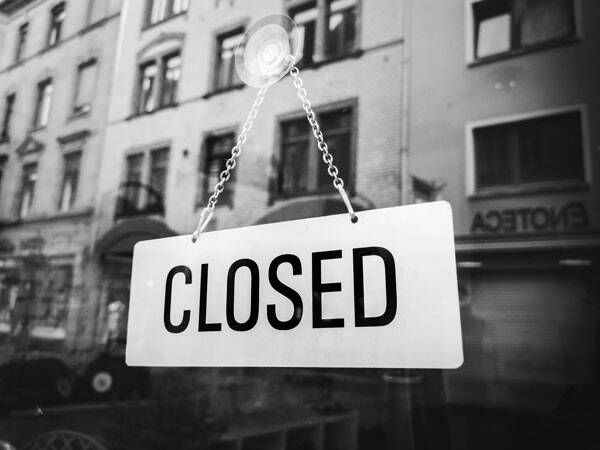

Change
We see that the corona crisis is reshaping the pyramid entirely. The bottom layer has become vastly more important. Food security, food safety, energy: it’s the basic needs that now matter the most.
Everything on top of the essentials - health, ethics, lifestyle, reconnection - is less important and less relevant with the shutdown of foodservice and the upcoming economic crisis. In the bottom layer we see a marketplace where big food is dominant, where supermarkets with lots of processed foods are becoming extremely dominant in shaping and influencing our diets.
Which trends and developments will be important after the period of COVID-19? If we assume the market will focus on the essentials (the bottom layer as described above), we can expect the following developments. We come to these through conversations with several industry leaders in foodservice over the past few weeks.
Top layer: Reconnect
A restaurant isn’t just filling a stomach, it’s feeding souls. It’s a place where the most vulnerable of human qualities is nurtured: empathy. According to the steps of the Foodlov pyramid, we are now at the highest meaning of food: reconnecting. We are repairing the broken connections between food, producers, nature’s seasons, and each other. Strong food cultures like Italy, Spain, France, Japan and Thailand already possess a powerful sense of sharing and caring through food as a community.
Fourth layer: Identity & Lifestyle
Food is a lifestyle. Before COVID-19 foodies were willing to wait half an hour for a cup of coffee made by that one barista, using that one blend. Status is no longer just the car you drive, but the food choices you make, the restaurants you frequent and the food you serve at home. The dinner table is the catwalk of good taste.
- Think about the rise of veganism and vegetarian food among the new generations.
The third layer: Origins & Ethics
What’s on your plate reflects what’s happening in the world. There is a strong relationship between plate and planet. We are getting better at understanding that the world is a closed system with finite resources. We see and feel that in the 21st century everything is connected. The choice of what we eat on this level of consciousness of the Foodlov pyramid is the key to a better world. Sustainable plant forward dining is one of the most important answers to this planetwide challenge.
The second layer: Health
On the second level of the pyramid, food evolves from mere nutrition to a means of healing and cleansing. Food will keep you in shape. The biggest trend of the last decade. Food as medicine. Food —for a specific category of foodies— serves even as internal cosmetics.
- A salad bar with different toppings such as: raisins, nuts, cheese, smoked chicken, fruit, beets, raw vegetables, hummus dip
- Whole fruit
The bottom layer: Energy & Food Security, Food Safety.
Food as fuel. At the bottom of the pyramid food serves no purpose other than providing fuel for your body to function.
- This can be fresh food, but a lot of it is ultra processed food.

Briefly, the Foodlov pyramid consists of:
In 2015 Food Inspiration presented the Foodlov pyramid. Inspired by the famous Maslow pyramid, the Foodlov model is a reflection of the values and attributes ascribed to food. It’s also an evolutionary path that a person, a group, or a society can walk on the way to forming a self-transcendent food culture. That means a culture which honours food experiences that go above or beyond the normal physical experience.
Redefining the Foodlov pyramid
Many people are now assuming the corona crisis will act as a reset button for our society. In the conversations we have had with lots of industry- and thought leaders over the last weeks our insights have grown. We are living in an unprecedented time of chaos and complexity. And although no one can predict what the outcome of this crisis will be, we want to give our best guess regarding the impact on our world of food and hospitality. How can we visualize that big reset, that change in our food system? So that we can better understand what’s going on, what the lasting impact will be on consumer behavior and on food systems.
Hans Steenbergen Xiao Er Kong
What will COVID-19 mean for our food experience, our food supply chain, our menus? The scenarios for a possible future now are drastically different compared to two months ago. Founding editor of Food Inspiration Hans Steenbergen thinks the evolution towards a healthier and more sustainable food system will temporarily be in lockdown. But if a cure for this disease would be found, the care for a better foodworld will bounce back stronger than ever before.
Redefining the Foodlov pyramid
What effect is COVID-19 having on our food experience?
6 min









